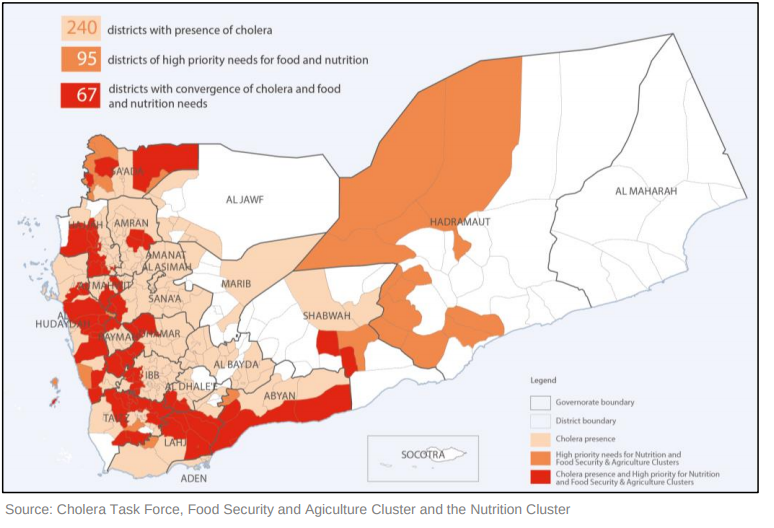
We can no longer refer to the spread of cholera in Yemen as an outbreak. That word is not nearly strong enough.
A 'terrifying explosion' is about as close as we can come to accurately describing the cholera crisis going on at the moment in Yemen.
Although cholera is endemic in Yemen, an uptick in cases made their first appearance back in October of last year with 15 cases confirmed as of October 13th. Since that time, the situation has ebbed and flowed. But, the course that the disease has taken over the last month is nothing short of remarkable.
Throughout the end of last year, the cholera was being effectively contained and there was hope that a crisis would be avoided. However, the conditions after years of violence and war in Yemen made the spread of the disease ripe for the picking and an outbreak was officially declared on April 27th. Quickly, there were thousands of cases and hundreds of deaths and a state of emergency was declared. In May, the numbers of deaths were continuing to rise rapidly, with a report of 34 dead in just two weeks.
Cholera is caused by the bacterium Vibrio cholerae. An infection leads to huge volumes of profuse, watery diarrhea - causing rapid fluid loss and death by dehydration. Because V. cholerae lives in the water, the disease cholera is easily prevented by access to clean water and sanitation.
But, now, the situation has again changed entirely. In just one month since then, the number of suspected cholera cases is over 100,000, with roughly 800 deaths. To put the death rate into perspective, they are currently reporting about one death per hour. As usual, children and older people are bearing the brunt of the bacterial infection.
After two years of war, violence and destruction, Yemen was in a severe crisis before cholera took hold. The status of health care and vaccination efforts in Yemen have declined dramatically and not even half of the health facilities are functional.
Malnutrition rates in four areas of Yemen are beyond the WHO emergency threshold which is important because malnutrition and cholera go hand in hand. Cholera is more likely to cause an outbreak where people are malnourished and people who are malnourished are more likely to become infected with cholera.

As of the end of May, 136 Oral Rehydration Corners (out of a goal of 1,640) have been established and 99 Diarrhea Treatment Centers (out of a goal of 328) have been opened. To keep any health care present, funding is critical.
The necessary funds are $66.7 million, $55.4 million is still needed. If the response that Haiti received from the world for their ongoing cholera tragedy is any indication, I will unfortunately be writing far too many stories about this crisis in Yemen for far too long.
References:
http://reliefweb.int/report/yemen/yemen-humanitarian-bulletin-issue-24-0...



